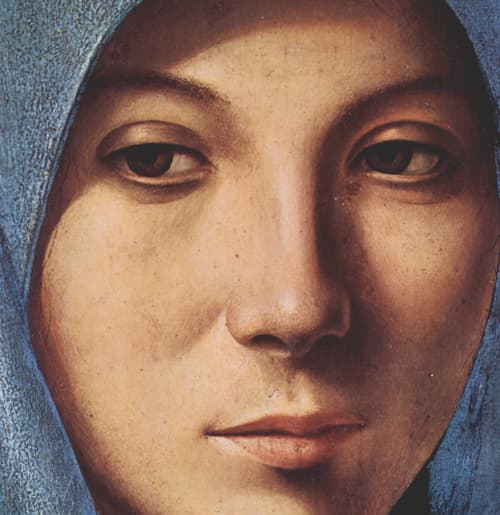Wonder Woman, 2017. Directed by Patty Jenkins.
Wonder Woman is slated to be this summer’s blockbuster hit. Perhaps that’s a bit premature since only a little over half of the season’s films have been released, but the film continues with a slight momentum in the box office. There are two things worth noting that make it unique: 1) the director of the film, Patty Jenkins, is the first woman to direct a $150 million (USD) film budget and 2) Diana displays a kind of feminism that is, unfortunately, rare nowadays in the big screen. I would like to focus on this last point and venture further to suggest that at certain moments Diana’s feminism is in many ways a particularly Marian feminism.
The moment that struck me the most occurs about half way in, the “No Man’s Land” scene, which surprisingly was almost cut from the film. Diana (played by the Israeli actress Gal Gadot) is walking through the trenches where British soldiers are stuck, unable to advance because the German army has occupied a nearby town. The rest of the crew led by the Allied spy Steve Trevor (played by the American actor Chris Pine) press forward seemingly not noticing the unmotivated soldiers and the suffering townspeople. A woman with a child in her arms reaches out to Diana and implores her to help liberate the town. Up to this point Diana has had to deal with a fashioned Edwardian image of how a woman is supposed to dress, brute machismo in a government cabinet meeting, and merciless disregard for the suffering. But this is the key moment when Diana realizes that she’s the one who has to act; this woman has to do something. Here is the exchange with Steve.
Steve: This is no man's land, Diana! It means no man can cross it, all right? This battalion has been here for nearly a year and they've barely gained an inch. All right? Because on the other side there are a bunch of Germans pointing machine guns at every square inch of this place. This is not something you can cross. It's not possible.
Diana: So…what? So we do nothing?
Steve: No, we are doing something! We are! We just—we can't save everyone in this war. This is not what we came here to do.
Diana: No. But it's what I'm going to do.
It’s important to notice the cinematography in this scene. Diana stands with her back to the camera as it pans around her. She begins to reveal her Amazonian armor—which the viewer can’t see—and the soldiers stand amazed at her. The shot is only ten seconds long but in that brief time the viewer has already trusted her resolve to protect humanity, even when she will be tempted in the final battle scene to see human life as nasty, brutish and short. She climbs up the trench ladder and starts deflecting hundreds of bullets. It isn’t the suit or anything she possesses that make her ‘super’:it is she, herself.Diana selflessly places herself in the center of the battle and gives Steve and the others the window in which to press forward against the enemy. I couldn’t imagine the film without this scene. The character of Diana is perfectly summed up and displayed in it. At this moment the viewer knows that there isn’t anything that will get in her way and that she will break any mold imposed on her by the world. It is Diana herself that is the message.
This was enough for me to feel that Wonder Woman is in many ways the superheroine archetype of Mary of Nazareth. What makes Diana a superheroine is that she was formed by Zeus with the purpose to kill the god Ares. What makes Mary “full of grace” is that she was formed by God to be the bearer of His Son, who would “destroy the works of the devil” (1 John 3:8). What makes Diana able to inspire and lead men into battle is that she could deflect anything that was thrown at her. What makes Mary “Mother of Hope” is Christ’s Paschal Mystery, where “death is swallowed up in [His] victory” (1 Corinthians 15:54). What makes Diana a woman of valor, beauty, goodness and empathy is her opting for love in spite of man’s frailty and destructive capacity. What makes Mary a woman of valor, beauty, goodness and empathy is her perpetual fiat of love which makes her a crucial figure in the Incarnation and ultimately the Paschal Mystery.
Perhaps the strongest case for this Marian analogy is Diana’s love. Her simplicity and righteousness certainly compel her to help everyone in danger, but beyond that it is ultimately her fierce maternal love for humanity that distinguishes her from all other superheroes. No other superhero loves humanity the way she does in this film. Rightly so it can be said that no other human person loves humanity as much as Mary, the Mother of our Lord, does. Love defined Mary because she conceived Love itself in her womb.
Lastly, in the final battle between Ares and Diana there is a key moment of very telling dialogue:
Ares: They do not deserve your protection.
Diana: It’s not about deserve…It’s about what you believe…And I believe in love.
Ares: Then I will destroy you.
I don’t think any other superhero has ever said this, at least not so explicitly. Love is the guiding principle of Diana’s existence and the ground of everything she does. She knows that she has found her mission: to protect humanity out of love for humanity even when humanity is self-destructing. Doesn’t Mary do the same thing? Doesn’t she love those for whom Christ died? "Turn then, most gracious advocate, thine eyes of mercy toward us, and after this our exile, show unto us the fruit of thy womb Jesus."
Art Sanchez serves as director of faith formation at St. Francis of Assisi parish in Arizona.
